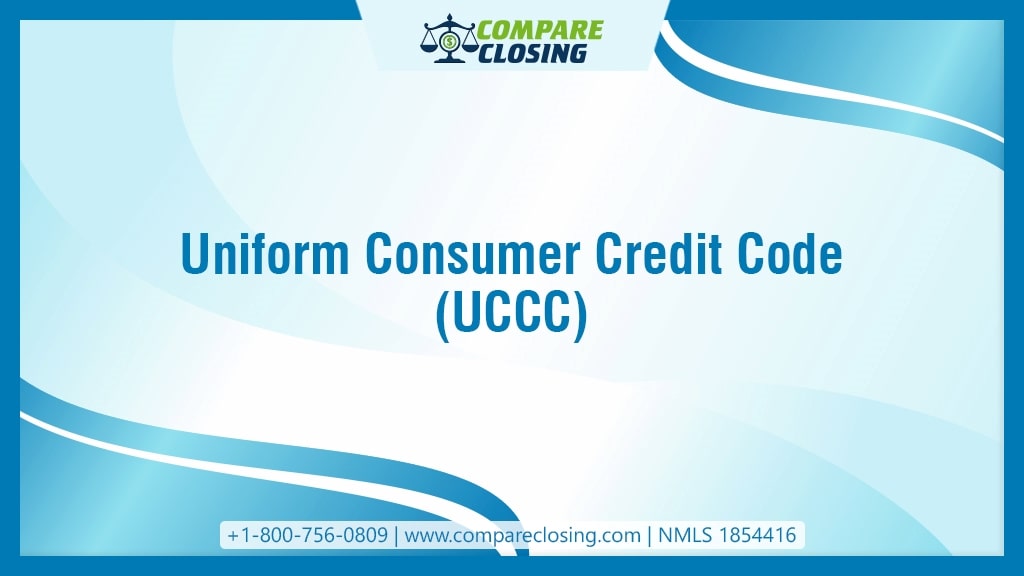Table of Contents
- What Are Netting Escrows & How Does It Work?: The Best Guide - January 2, 2024
- The Secret About Prescriptive Easement: Top Guide 1 Must Know - December 4, 2023
- About Home Equity Loans In Texas And How Can One Obtain It - November 27, 2023
About Uniform Consumer Credit Code (UCCC)
When you apply for credit to purchase a product, real estate, or service, your lender has to go through a lot of laws and regulations before they can provide you with the required credit.
But what are these laws and regulations? And how does it affects a consumer? In this post, we will understand what is UCCC (Uniform Consumer Credit Code) in detail.
What Is The UCCC?
The Uniform Consumer Credit Code, also known as UCCC, is a guide to state law that governs how lenders treat consumers.
Its purpose is to protect consumers from predatory lending and minimize misinformation among other regulations.
The Uniform Consumer Credit Code is a code of conduct designed to protect consumers from misinformation or fraud that could be caused by creditors or lenders.
Enacted as state law, this code of conduct sets a cap on rates and fees and requires the disclosure of credit costs to be provided to the borrowers. It also requires lenders to give repayment options for borrowers who default on loans.
The Uniform Consumer Credit Code was prepared by the National Conference of Commissioners on Uniform Law of States or the Uniform Law Commission. This code of conduct was created in 1968 and was later revised in 1974.
It is intended to address consumer credit problems and concerns in the United States, with a focus on consumer lending, but is not intended to be predatory or unethical.
The Uniform Consumer Credit Code is not an actual state or federal law; however, the states can use it as a template to create consumer credit laws that comply with other state laws.
This code is currently being used by eleven states in the country namely: Utah, Idaho, Wyoming, Kansas, Indiana, Iowa, Oklahoma, Maine, South Carolina, Colorado, and Wisconsin. Some of the other states may have used consumer credit laws that are similar to this code.
How Does UCCC Work?
The Uniform Consumer Credit Code is a model law created by the Uniform Law Commission to create a potential law that can be proposed to the states.
States can decide whether to apply these rules as guidelines and if so, the principles will be uniform where applicable.
This code was revised in 1974 to meet the new needs of low-income consumers looking for loans. It included new guidelines for credit cards across the country, which was a new popular payment method at the time.
The code has not been enacted in all US states, but several national laws have extended similar credit laws.
National legislation includes the Truth in Lending Act, the Fair Debt Collection Practices Act, and the Equal Credit Opportunity Act.
History Of UCCC
As mentioned above, the Uniform Consumer Credit Code was established in 1968 as a means of protecting consumers from fraudulent and suspicious lending practices.
Changes were made in 1974 to update the code as the financial industry and regulatory environment changed.
The Code was developed by the National Conference on Unification of Commissioners, also known as the Unified Law Commission.
The commission was established in 1892 to provide the states with statutory stability and clear legislation.
The United States, the District of Columbia, Puerto Rico, and the US Virgin Islands appoint a total of 350 commissioners who are attorneys by profession.
The Unified Law Commission is responsible for more than 300 different individual laws, including the Uniform Consumer Credit Code and the Uniform Commercial Code (UCC).
UCC is a set of laws and regulations designed to help standardize business transactions between organizations in different states.
This code was created in 1952 to resolve issues faced in business transactions by out-of-state companies. Now widely adopted by all states, UCC has laws and standards that regulate activities such as lending and banking.
Other tools developed by the committee cover a wide range of subjects, such as family and domestic law, real estate, wills, commercial law, dispute resolution, trusts, and inheritance law.
Conclusion
The UCCC helps regulate various relationships between the lender and the consumer.
By putting a cap on how much a lender can charge a consumer with interest rates and fees, it helps to keep the cost of credit in check so that the lenders and banks don’t take advantage of the same.
With the help of UCCC, many states and credit servicing agencies are making their credit laws to protect consumers from predatory lending practices.
Amanda Byford
Amanda Byford has bought and sold many houses in the past fifteen years and is actively managing an income property portfolio consisting of multi-family properties. During the buying and selling of these properties, she has gone through several different mortgage loan transactions. This experience and knowledge have helped her develop an avenue to guide consumers to their best available option by comparing lenders through the Compare Closing business.





